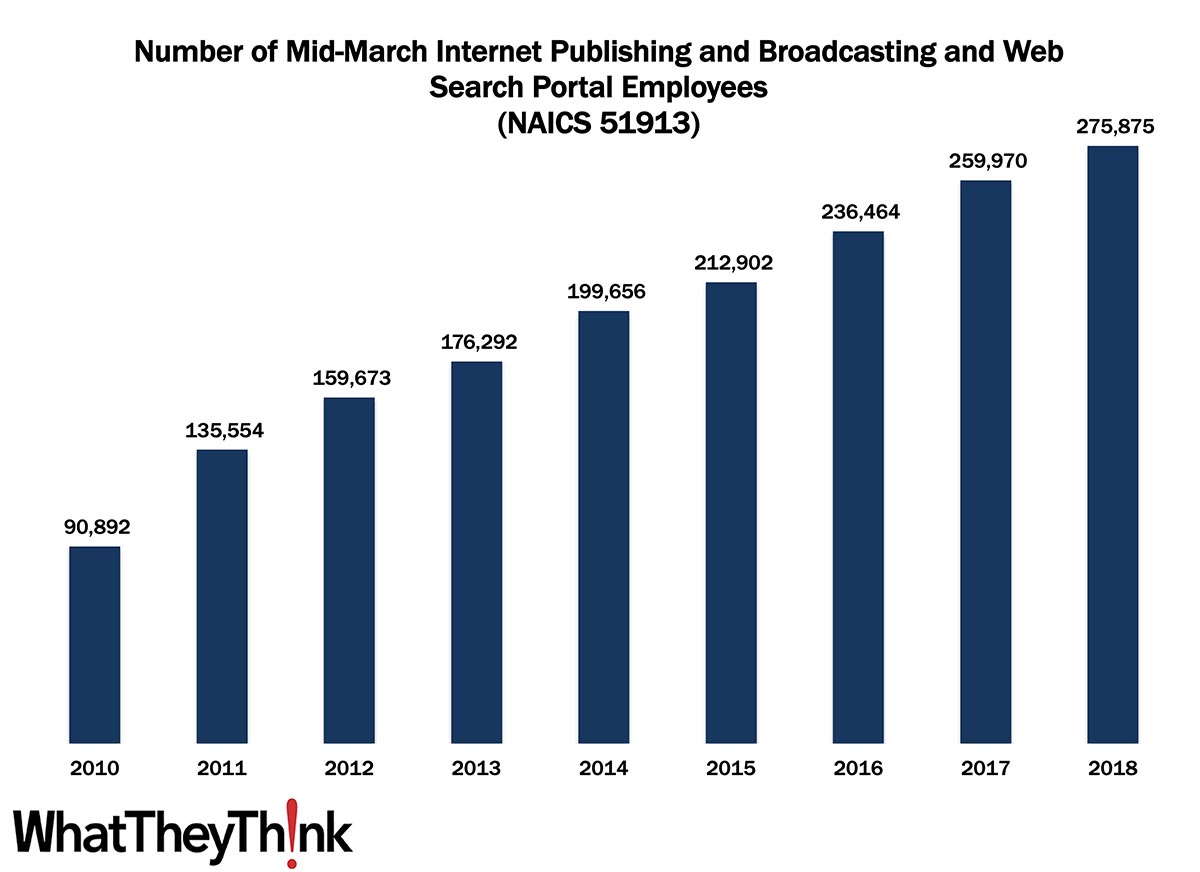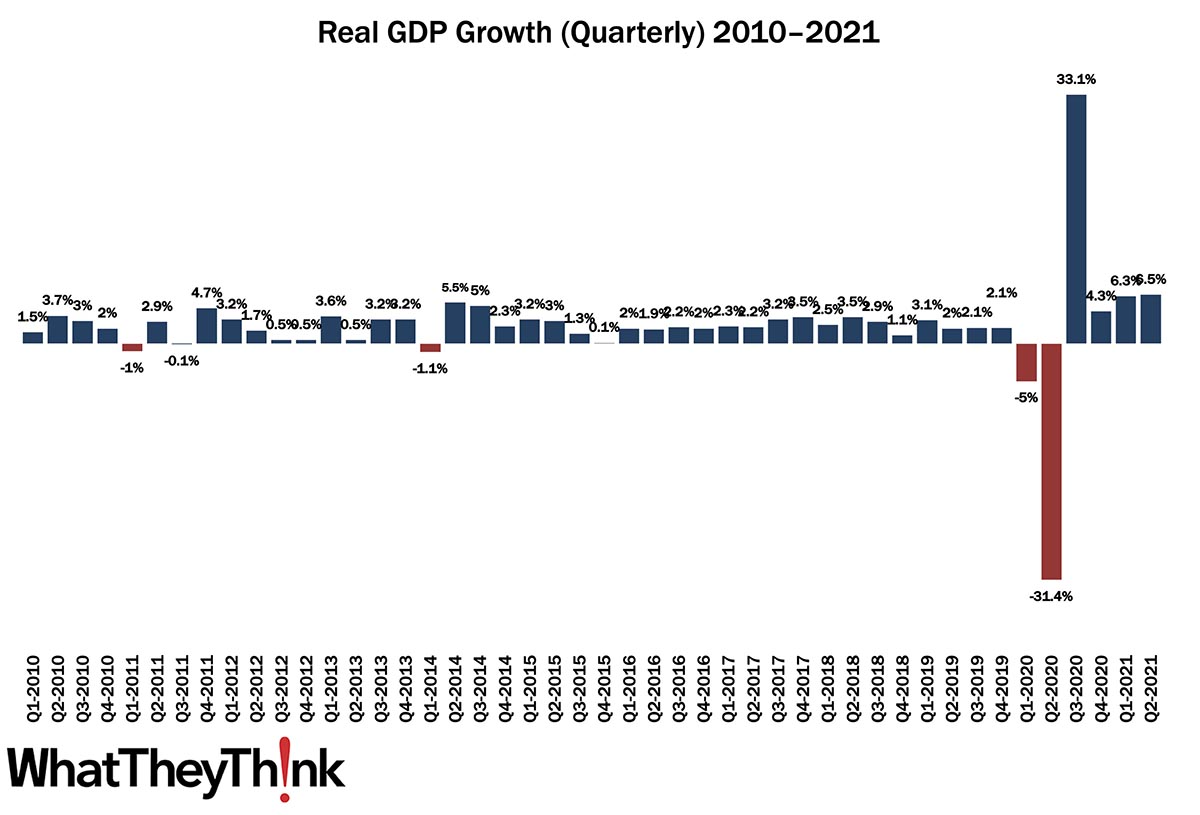
In 2010, there were 90,892 employees in NAICS 51913 (Internet Publishing and Broadcasting and Web Search Portals). Over the course of the decade, employment in this category grew steadily to reach 275,875 in 2018.
The Bureau of the Census definition for this business classification (officially designated “Internet Publishing and Broadcasting and Web Search Portals”):
This industry comprises establishments primarily engaged in (1) publishing and/or broadcasting content on the Internet exclusively or (2) operating Web sites that use a search engine to generate and maintain extensive databases of Internet addresses and content in an easily searchable format (and known as Web search portals). The publishing and broadcasting establishments in this industry do not provide traditional (non-Internet) versions of the content that they publish or broadcast. They provide textual, audio, and/or video content of general or specific interest on the Internet exclusively. Establishments known as Web search portals often provide additional Internet services, such as email, connections to other Web sites, auctions, news, and other limited content, and serve as a home base for Internet users.
The 2010s saw the explosion of social media and podcasting, while not entirely new, also took off in this period, as well as general Internet publishing. The explosion in this category was largely due to reduced costs of entry in the form of publishing, recording, and editing hardware and software, and increased access to WiFi and other broadband Internet. Low overhead costs also mean that huge revenue streams are not required for these kinds of businesses to survive. survival because of their lack of fixed cost infrastructure. For many bloggers, “hobbyist” publishers, and podcasters, a sustaining revenue is all that is required.
At the higher end, Internet publishing companies now rival major, traditional newsgathering establishments—Huffington Post, Buzzfeed, Slate, and Salon are often sourced as often as “gray lady” publishers like New York Times or even CNN.
Twitter, Facebook, LinkedIn and other social media companies are also found in this category. These are now major media players that compete for advertiser and marketer dollars—often at expense of print and other traditional media.
And trade publishing across many industries is increasingly of the Internet variety. Indeed, WhatTheyThink fits into this category.
Next time, we’ll turn our attention to the converting NAICS categories:
- 3222 Converted Paper Product Manufacturing
- 32221 Paperboard Container Manufacturing
- 322211 Corrugated and Solid Fiber Box Manufacturing
- 322212 Folding Paperboard Box Manufacturing
- 322219 Other Paperboard Container Manufacturing
- 32222 Paper Bag and Coated and Treated Paper Manufacturing
- 32223 Stationery Product Manufacturing
- 32229 Other Converted Paper Product Manufacturing
- 322291 Sanitary Paper Product Manufacturing
- 322299 All Other Converted Paper Product Manufacturing
These data, and the overarching year-to-year trends, like other demographic data, can be used not only for business planning and forecasting, but also sales and marketing resource allocation.
This Macro Moment
Last week, the Bureau of Economic Analysis released its advance estimate of Q2 GDP:
Real gross domestic product (GDP) increased at an annual rate of 6.5 percent in the second quarter of 2021, according to the "advance" estimate released by the Bureau of Economic Analysis. In the first quarter, real GDP increased 6.3 percent (revised).

If we look at GDP on a Q2-over-Q2 basis, it’s up 16.7% as Q2 2020 was the nadir of the pandemic. Although 6.5% is good (certainly better than -31.4%), it was actually below economists’ expectations, which was attributed to declines in private inventories, residential investment, and government spending.
So what are the expectations for Q3? Via Calculated Risk, the consensus is between 6% and 9%.









